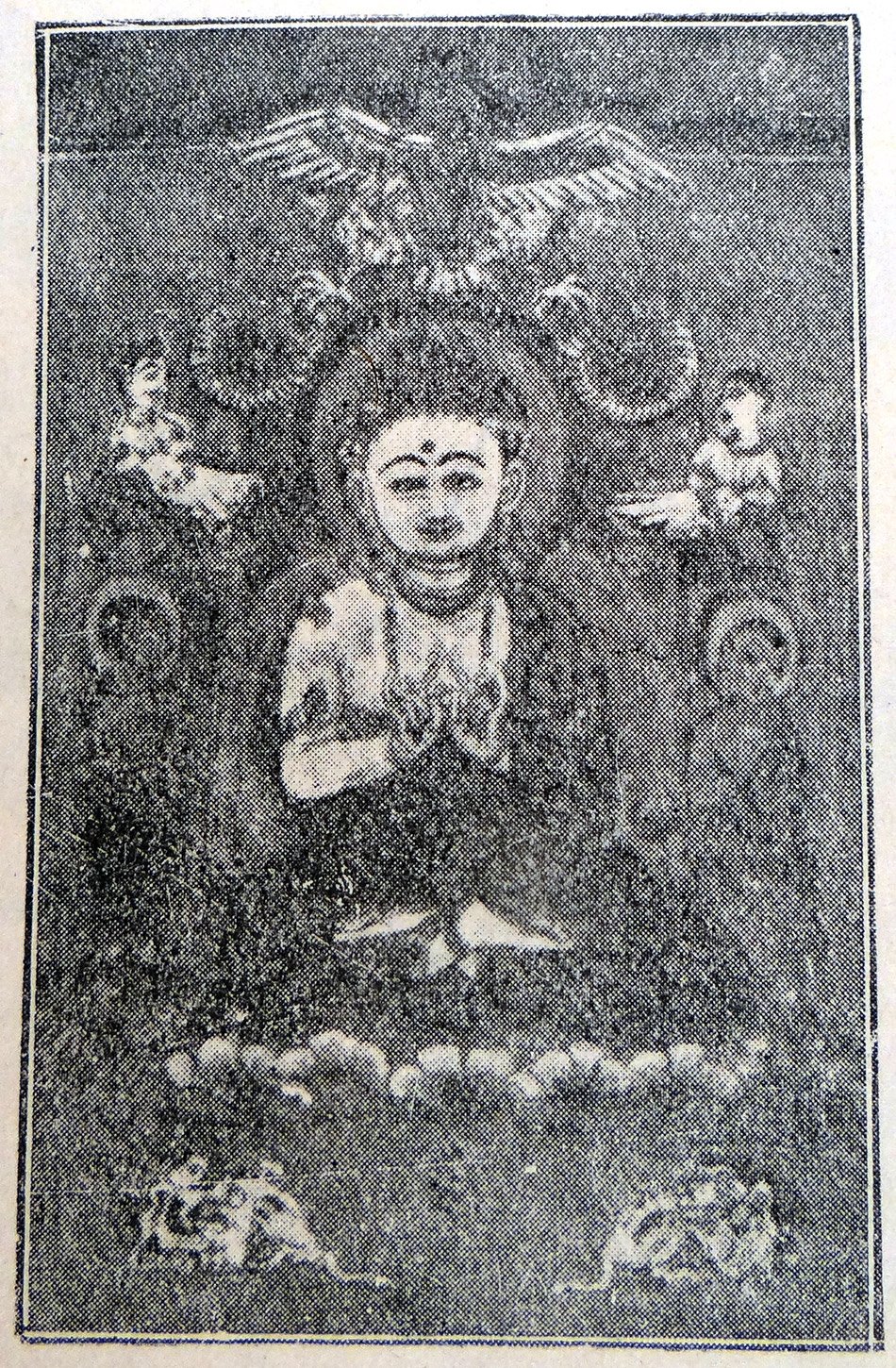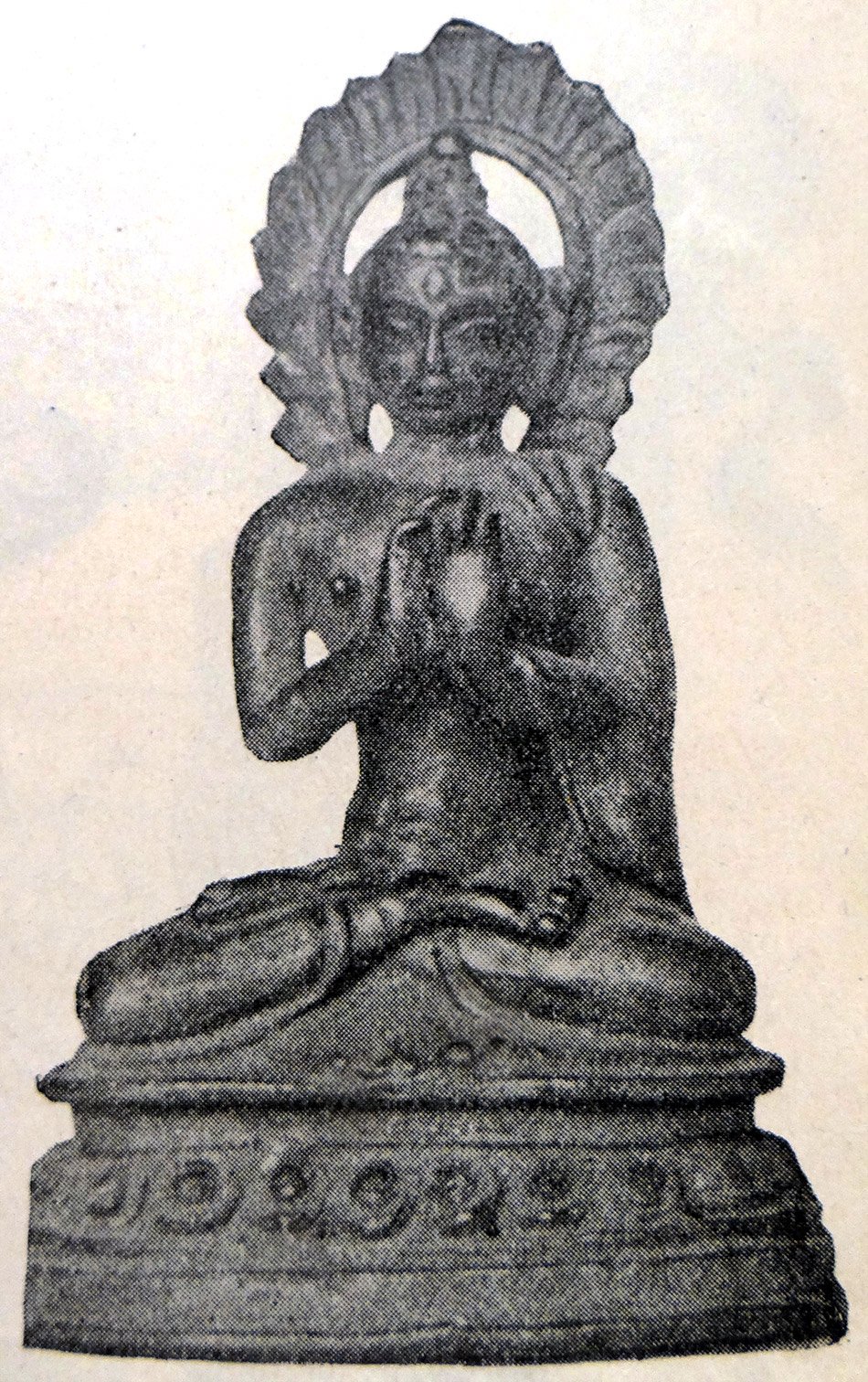The Indian Buddhist Iconography
by Benoytosh Bhattachacharyya | 1958 | 51,392 words | ISBN-10: 8173053138 | ISBN-13: 9788173053139
This page contains an iconography image of Vairocana and represents figure 28-29 of the book Indian Buddhist Iconography, based on extracts of the Sadhanamala English translation. These plates and illustrations represent either photographs of sculptures or line-drawing reproductions of paintings or other representations of Buddhist artwork.
Figure 28-29 - Vairocana
 Figure 28: Vairocana |
 Figure 29: Vairocana (Nepal) |
Vairocana is mentioned along with the other Dhyāni Buddhas in the Guhysamāja which is dated circa 300 A.D. He is regarded as the oldest and the first Dhyāni Buddha by the Nepalese Buddhists and His place is in the sanctum of the Stüpa where he is the master of the whole temple and its contents. Naturally, therefore, he cannot be represented outside the Stūpa, but exception to this rule is frequently met with in the important stūpas of Nepal where he is assigned a place between Akṣobhya in the East and Ratnasambhava in the South.
Colour: white;
Symbol: discus;
Mudrā: dharmacakra;
Vāhana: dragon;
Instead of two, he may have many arms, and such descriptions are also met with in the Niṣpannayogāvalī. Some of his two-armed images are reproduced here (Figs 28, 29). His images are found in Tibet and China.
